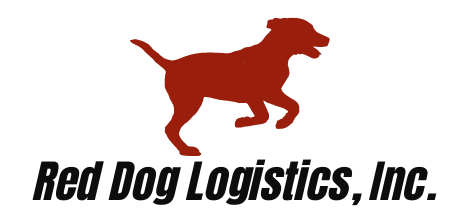With hurricane Ian recently touching down in Florida, the infrastructural and individual damage causes us as a society to realize that mother nature is undefeated. We can take massive steps to alleviate the damage, but can’t stop any act of nature in its tracks. In the freight business, being proactive pays dividends to avoid disaster. Knowing where freight is, pick up/drop off schedules, being aware of market trends and national lanes are all things that give themselves to the notion of building the road before you traverse it. That’s good and well when dealing with circumstances that are in your control, or at the very least can be resolved practically. Businesses to a large degree have jurisdiction over how they handle adversity, how they operate to avoid future issues, and gathering relevant information on how to handle circumstances that are out of their control. For instance, as a carrier there are plenty of procedures set in place to deal with a trailer with a blown out tire, freight behind schedule, or communication channels to ensure every portion of the operation is on the same page. Those issues, or at the very least their solutions, are under the discretion of the business in how they are handled. But what about complications that are unavoidable and are outside the control of the business? With Hurricane Ian currently wreaking havoc in Southwestern US & surrounding countries, it is completely out of our hands to stop a hurricane. We can plan how to operate in the aftermath, but until its conclusion there’s truly nothing to be done in efforts to combat both the hurricane itself and its resulting impact. In shocking news, we don’t have the capability to change the weather. What we can do is forecast if and when weather phenomena will affect us, but once the storm hits our coastlines, the most we can do is sit and wait for it to end so we can execute a resolution that something as destructive as a hurricane, earthquake, or tornado can cause. Experts warn that proceeding its initial impact, the scar that the hurricane will leave has the potential to cripple supply chains for weeks. Flooding, power outages, and wind damage all lend themselves to creating impenetrable obstacles. It could be the stalling of factory and farm production, or constricting freight movement through major ports or highways. Humanity has been navigating severe weather for thousands of years, but given the widespread operation, function, and importance of the freight industry, even minor storms can have disastrous consequences. If it’s out of your control and even resolution efforts are stifled because of infrastructure failure, what do you do? Can you even do anything to combat the impact of inevitable weather events?
In short, there is no true way to map out a resolution to any singular catastrophe. Mitigating the damage and slowly reconstructing facets of your supply chain is more of a pop quiz than it is a test. You don’t have the time or knowledge to adequately plan ahead, you simply take stock in the aftermath. There is no way to predict what roads will be flooded, what bridges will fail, and what buildings will remain. If you can’t anticipate what complications will arise until after the fact, how do businesses sufficiently navigate their way to the greener grass on the other side?
One of the most valuable facets of the freight industry is the network in which you operate. Having every function of your supply chain in house has its benefits, but even when slight complications arise, the capability of one singular team is not enough. Even in perfect health without any natural phenomenon, the supply chain benefits from the combined work of every single aspect it’s made of. From dispatchers to support teams, accounting to operations, the combined knowledge & effort to reach a solution is bolstered by the principle of togetherness. Two brains are better than one, and three greater than two and so on. The individualized separation of various functions of the supply chain leads to a greater understanding, superior inclination to resolve issues, and a comprehensively larger pool of people that all work toward the same goal. Carriers and shippers, especially those of a smaller scale, are stretched thin in their efforts to check every box. Expanding in house capabilities or partnering with a 3PL is a surefire way to increase the communication and efforts that go into fixing problems. Unfortunately, there’s no way to avoid the consequences of mother nature. However, by expanding and bolstering your network, there is an improved flexibility, and the response to adversity is a product of the combined knowledge and effort that a barebones team could not reciprocate.
https://www.linkedin.com/pulse/how-can-impact-hurricanes-mitigated-supply-chain-/
